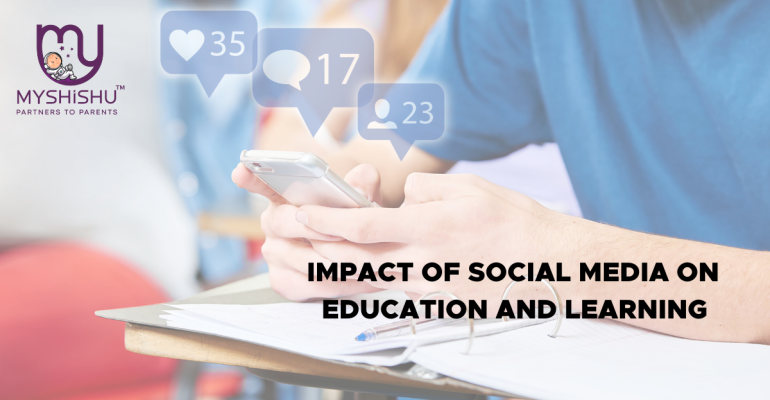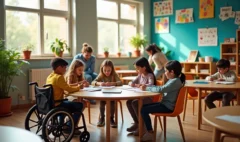The Double-Edged Sword: Discover the Social Media’s Impact on Education and Learning
The Double-Edged Sword: Discover the Social Media’s Impact on Education and Learning
Introduction
Social media weaves itself into the fabric of our lives, and education is no exception. From beautiful online platforms to instructive YouTube channels, these platforms hold tremendous potential to reshape how we learn and teach But like any powerful tool, social media comes with a double-edged sword. Let’s explore the positive and negative impacts of social media in education, and explore how teachers and students can use its strengths to mitigate its shortcomings.
This blog explores the effects of various aspects of social media in education and learning, exploring potential advantages and disadvantages.
Advanced learning: Positive effects
Access to a world of knowledge
- Social media break down geographic barriers, giving students access to a vast ocean of educational resources. YouTube has educational channels, informative blogs, and online communities that offer diverse perspectives and in-depth explanations on a wide range of topics.
- This empowers students to become self-directed learners, exploring in depth topics that interest them.
Collaborative Learning and Peer Support
- Social platforms such as forums and discussion boards contribute to collaborative learning. Students can interact with peers, share learning materials, participate in discussions, and strengthen their understanding of concepts.
- This collaborative environment can be especially helpful for project-based learning, allowing students to work together and learn from each other’s strengths.
Improved communication and engagement
- Social communication allows for communication beyond the walls of the classroom. Teachers can create online groups to share posts, conduct surveys and quizzes, and encourage discussion.
- This promotes a more engaging learning environment, provides students with additional information and allows doubts to be clarified outside of class time.
Real World Learning and Global Awareness
- Social media connects students to current events and real-world applications of their learning.
- Following industry experts and educational institutions on social media exposes students to ongoing research, debate and discussion, and provides relevant and contextual information about their learning.
Encouraging creativity and self-expression
- Platforms like Instagram and Tik Tok can be incredibly educational if used appropriately.
- Educational stories are interesting stories, such as science experiments or historical reenactments, to make learning interesting and interactive. Students can also use these sessions to shape their learning journey, increase their confidence and creativity. The constant buzz and distraction of social media can be a major distraction for students. This can lead to procrastination and hinder the ability to focus on learning. It’s also important to implement healthy digital habits and set limits for social media use. Educational stories are interesting stories, such as science experiments or historical reenactments, to make learning interesting and interactive. Students can also use these sessions to shape their learning journey, increase their confidence and creativity.

The flip side: Challenges and considerations
Distractions and procrastination
The constant buzz and distraction of social platform can be a major distraction for students. This can lead to procrastination and hinder the ability to focus on learning. It’s also important to implement healthy digital habits and set limits for social media use.
Misinformation and unreliability
Social platform is a breeding ground for misinformation. Unconfirmed statements and biased opinions can easily obscure reality. Critical thinking is essential in the digital age, enabling students to distinguish between credible and unreliable content.
Cyber bullying
The anonymity social platform offers can embolden bullies. Cyberbullying can negatively impact a student’s mental health and well-being. Open communication with students about responsible online behavior and the creation of safe spaces to report cyberbullying are paramount.
Privacy Concerns and Online Safety
Sharing personal information online poses privacy risks. Teachers and parents should guide students on appropriate online behavior and protect their privacy. Schools can develop clear policies regarding the use of social media in the school environment.
Addiction and mental health
Excessive use of social media is addictive, causing anxiety, depression and sleep disorders. Promoting an appropriate balance of online and offline activities is essential to protecting psychological well-being.
The way forward: Harnessing the power of social media
So, how can we harness the positive impact of social media in education, and minimize the challenges?
Here are some basic strategies
Teachers as social media consultants
- Teachers can use social media platforms to create an engaging learning experience. Building online communities, using educational hashtags, and integrating multimedia content into classes can increase student engagement.
- However, it is important for teachers to emphasize online safety by modeling responsible online behavior.
Digital literacy promotion
- Schools are integrating digital literacy programs into their curricula to teach students how to evaluate online content, identify credible sources, and use social media responsibly.
Open Communication and Parental Support
- Open communication between parents, teachers and students is essential.
- Parents can help their children develop healthy digital habits, and schools can create a safe and supportive environment for students to report online bullying and raise concerns about unreliable information.
Find a balance
- Ultimately, it’s about finding a balance. Social site can be a powerful learning tool, but it shouldn’t replace traditional classroom instruction or normal social interaction.
- Setting time limits, designing machine-free zones, and encouraging outdoor activities are essential to a well-rounded educational experience.
Additional Common Questions
Q: How can social media be useful for education?
A. YouTube and other forums and educational groups offer a wealth of educational resources and ideas.
Social media enables students to connect with peers, professors, and experts for discussion and project collaboration.
Educational communities and conferences encourage knowledge sharing and deeper engagement of disciplines.
Q: What are the potential drawbacks of social media in education?
A. The constant flow of information and the pace of social media can be mentally draining and cause procrastination.
Unsubstantiated information and echo chambers can lead to misconceptions and hinder critical thinking.
The anonymity of online platforms can embolden bullies and negatively affect mental health.
Q: How can teachers use social media to teach effectively?
A. Encourage discussion and share learning materials through personal social media groups.
Use platforms like YouTube and educational blogs to supplement traditional classes.
Teach students how to evaluate online content, recognize bias, and use responsible online behavior.
Q: How can students best use social media for learning?
A. Surround yourself with good online communities focused on learning and sharing knowledge.
Ask questions, participate in meetings, and actively seek ideas.
Make deadlines for study time and avoid distractions.
Conclusion
The impact of social media on education is undeniable. It presents both challenges and opportunities. By acknowledging its shortcomings and embracing its strengths, teachers, students and parents can work together to harness the power of social media. Social platform has become an undeniable force in education, acting as both inspiration and challenge. It enables students to access information and enhance communication, but it can also be distracting and misinformed. The key is to harness its potential to reduce its shortcomings. By strategically integrating social platform with enhancing digital literacy, teachers and students can navigate this new learning environment, ensuring that technology enables knowledge, rather than hinders it.











